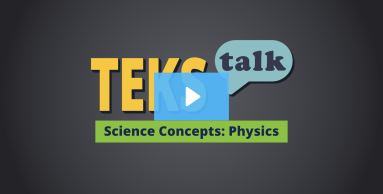- Science
- Grade 9
- Science concepts
PHYS.8.C

Knowledge and Skills Statement
The further explanation is designed to be a resource for educators that helps them better understand the topic their students are learning. Further explanations may be written at a more complex level than would be expected for students at the grade level.
Note that the wave speed is only determined by the medium the wave is traveling through, not the frequency or the wavelength. The velocity of the wave will remain constant in a specific medium. Increasing the frequency of a wave will decrease its wavelength.
Research
Enderle, Patrick, Natalie King, and Lauren Margulieux. "What's in a Wave? Using Modeling and Computational Thinking to Enhance Students' Understanding of Waves." The Science Teacher 88, no. 4 (2021):24-28. https://par.nsf.gov/servlets/purl/10221223
Summary: The authors developed a series of instructional activities that deepen students' conceptual understanding of waves by engaging in computational thinking while developing and using scientific and mathematical models. They designed this instructional sequence as an example of how to engage students in computational thinking while they learn about the concept of waves and their properties; several recurring themes and concepts; and other practices, such as modeling.
